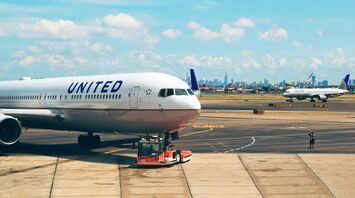United Airlines Boeing 787 Diverted Due to Bomb Threat, Safely Lands in Chicago

In a recent high-tension incident, a United Airlines Boeing 787 flight was diverted to Chicago O'Hare International Airport (ORD) following a bomb threat discovered onboard. The flight, initially en route from Newark Liberty International Airport (EWR) to Los Angeles International Airport (LAX), made an unscheduled landing at ORD after the crew identified a security issue.
Security Scare in the Skies
The Federal Aviation Administration (FAA) confirmed that flight UA1533 landed safely at ORD, over an hour and a half after departure from EWR, due to a bomb threat reported by the flight crew. The threat was identified when a flight attendant found a note in the aircraft's bathroom, prompting immediate action to ensure the safety of all passengers and crew onboard.
Despite the alarming situation, the local Federal Bureau of Investigation (FBI) office quickly clarified that there was no imminent threat to public safety or the airport, allowing the flight to continue to its intended destination in Los Angeles after thorough security checks.
The Flight's Journey
The aircraft, a Boeing 787-10 registered as N12006, resumed its flight, departing ORD in the afternoon and successfully completing its journey to LAX. The incident highlighted the effective response protocols in place for handling such threats, with the aircraft and its passengers' safety being the utmost priority.
United Airlines' Widebody Operations
This event comes amid United Airlines' extensive use of widebody aircraft for domestic flights, with 2,470 one-way flights scheduled in February 2024 alone. The airline's Boeing 787s, including the Dreamliner involved in the incident, play a significant role in connecting major U.S. cities and international destinations, demonstrating the critical importance of maintaining stringent security measures across all operations.
FAA's Bomb Threat Guidelines
The FAA has strict regulations for managing bomb threats, emphasizing the immediate notification of supervisors and the provision of all necessary assistance to affected aircraft. This incident underscores the vital collaboration between air traffic control, airline personnel, and law enforcement agencies to ensure the safety and security of air travel.
As the aviation industry continues to prioritize security, the successful resolution of this bomb threat incident serves as a reassurance to passengers about the rigorous safety protocols in place, designed to protect them under all circumstances.



















